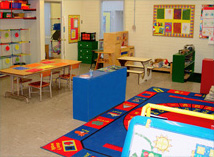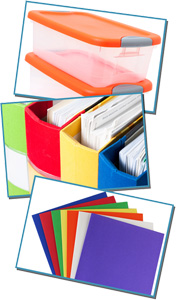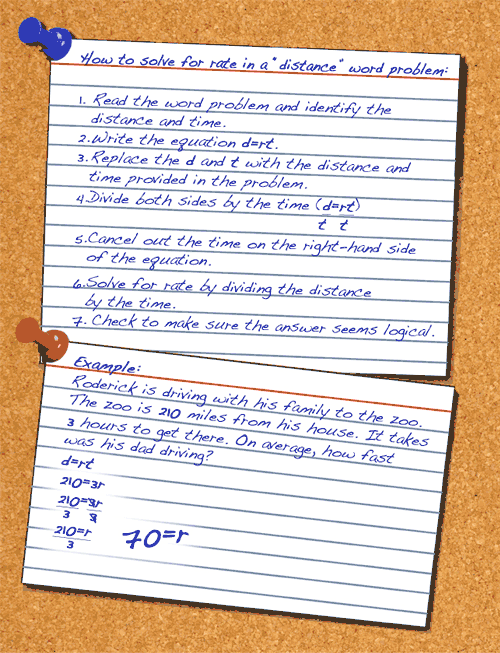How do teachers prepare their students and their classrooms for differentiated instruction?
Page 10: Organize the Classroom
 Generally, a well-organized classroom helps a teacher and her students to make the best use of instructional time. Traditionally, teachers organize their classrooms with the goal of providing largely whole-class instruction. In this teacher-focused environment, the teacher’s desk is often in the front of the classroom and the students’ desks are aligned so that the students can easily see the teacher. However, in a differentiated classroom, while keeping in mind the five keys to good room arrangement, the teacher should consider more-flexible options so that she can work more effectively with different groups or individuals. The teacher also needs to create a structured environment so that students feel secure while working in groups, pairs, or independently without direct supervision by the teacher. To create this structured environment, the teacher should address how to make the best use of:
Generally, a well-organized classroom helps a teacher and her students to make the best use of instructional time. Traditionally, teachers organize their classrooms with the goal of providing largely whole-class instruction. In this teacher-focused environment, the teacher’s desk is often in the front of the classroom and the students’ desks are aligned so that the students can easily see the teacher. However, in a differentiated classroom, while keeping in mind the five keys to good room arrangement, the teacher should consider more-flexible options so that she can work more effectively with different groups or individuals. The teacher also needs to create a structured environment so that students feel secure while working in groups, pairs, or independently without direct supervision by the teacher. To create this structured environment, the teacher should address how to make the best use of:
Five Keys to Good Room Arrangement
 In any classroom, one goal of the teacher should be to create an environment that is conducive to learning. To do so, the teacher must arrange the room to make efficient use of the space and to minimize distractions. The teacher can begin by following five simple suggestions:
In any classroom, one goal of the teacher should be to create an environment that is conducive to learning. To do so, the teacher must arrange the room to make efficient use of the space and to minimize distractions. The teacher can begin by following five simple suggestions:
- Use a room arrangement consistent with the teacher’s instructional goals and activities.
- Keep high-traffic areas free of congestion.
- Make sure the teacher can easily see the students.
- Keep frequently used teaching materials and student supplies readily accessible.
- Be certain that students can easily see instructional presentations and displays.
Emmer, Evertson, Clements, & Worsham (1997).
- Floor space
- Bulletin boards and wall space
- Materials storage
Floor Space
When they plan how to arrange the furniture, teachers need to consider how they will provide instruction and what arrangement will work best to achieve these goals. In a differentiated classroom, this will most likely require multiple furniture arrangements that support different types of instructional activities (e.g., whole-group discussion, small-group instruction). The table below outlines some general guidelines for arranging key pieces of furniture in a differentiated classroom.
| Considerations for Furniture Arrangement in a Differentiated Classroom | |
 |
Teacher’s desk
|
|
|
Students’ desks
|
 |
Storage (e.g., bookcases, filing cabinets, shelves)
|
|
|
Small-group work areas
|
|
Centers
|
|
Adapted from Tomlinson & Imbeau (2010).
* Note: In a differentiated classroom, teachers seldom use their desk during instructional time.
As in any classroom, safety is critical, and objects should not be placed in high-traffic areas. Additionally, teachers should consider how to arrange the classroom to accommodate students with special needs. For example, students who use certain devices might require close proximity to an outlet, while students with visual disabilities might need to be seated close to the board during whole-group instruction.
Materials Storage
 Because students will be working in different grouping formats and on a variety of tasks, teachers should store materials in a location that students can easily access without disrupting others. Below is a list of suggestions that teachers should consider when storing materials and supplies.
Because students will be working in different grouping formats and on a variety of tasks, teachers should store materials in a location that students can easily access without disrupting others. Below is a list of suggestions that teachers should consider when storing materials and supplies.
- Use storage bins or boxes to organize supplies.
- Identify place(s) in the room where students turn in completed homework, anchor activities, center activities, classwork, etc.
- Identify places in the room where students obtain materials for each activity.
- Clearly label storage containers as well as places to obtain or turn in work (pictures or text may be used for younger students who are unable to read or for English language learners).
- Create folders for students to store work that is not yet completed (different color folders can be used for different activities or subject areas).
- Have multiple pencil sharpeners and trash cans.
Bulletin Boards and Wall Space
With a variety of activities occurring in a differentiated classroom, teachers can make good use of wall space and bulletin boards to provide helpful information to their students. Some items might be posted for the entire year, while other items might change according to what the students are learning about or working on. Teachers might want to post items such as:
Hint Cards
Cards that contain instructional procedures and examples for tasks or skills that the students should know how to do but might have forgotten. Hint cards allow students to work independently and reserve the teacher’s time for working with other students. Hint cards may be posted on a hint board.

How to solve for rate in a “distance” word problem:
- Read the word problem and identify the distance and time.
- Write the equation d=rt.
- Replace the d and t with the distance and time provided in the problem.
- Divide both sides by the time (d divided by t equals rt divided by t)
- Cancel out the time on the right-hand side of the equation.
- Solve for rate by dividing the distance by the time.
- Check to make sure the answer seems logical.
Example:
Roderick is driving with his family to the zoo. The zoo is 210 miles from his house. It takes 3 hours to get there. On average, how fast was his dad driving?
d=rt
210=3r
210 divided by 3 = 3r divided by 3
210 divided by 3 = r
70=r
Tip
Teachers should consider leaving a wall blank in one area of the room. Students who are easily distracted or become overstimulated by visual stimuli might find it easier to work in this area.
